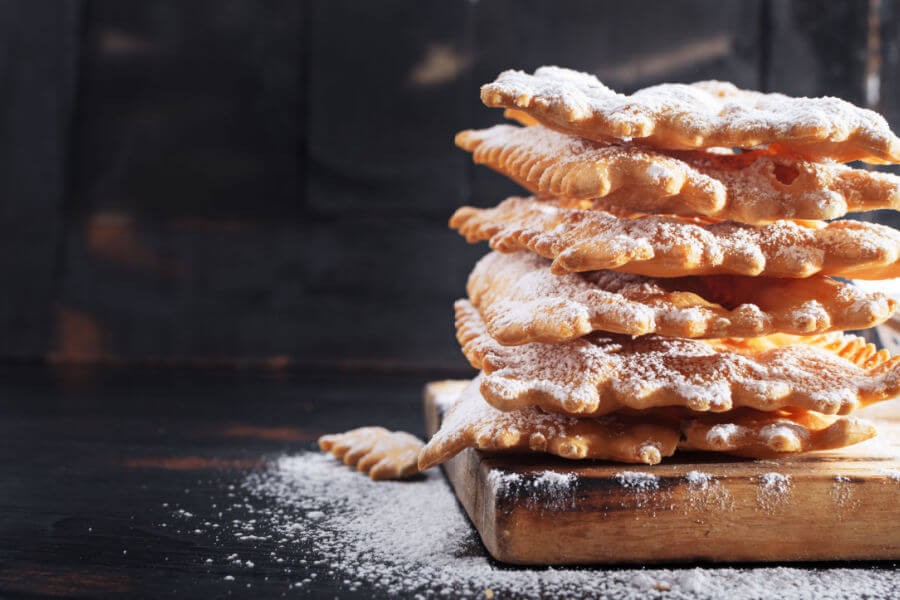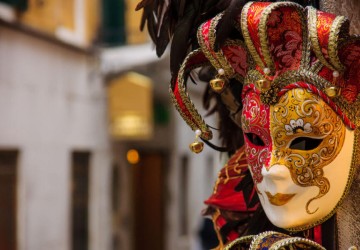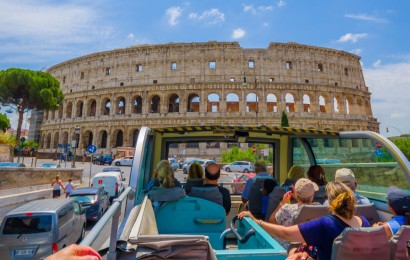The Roman Carnival is a festival much loved and awaited by the Romans and is celebrated with confetti, music and floats.
All over Italy, the Carnival festivity is a moment of lightheartedness and joy: Venice is famous for its traditional masks, Putignano for being the longest Carnival in Europe, Viareggio for its floats that are the largest and liveliest in the world.
But today we want to dwell on the origins and traditions of the Roman carnival.
The history of the Italian Carnival
Carnival is a feast that is celebrated before the liturgical anniversary of Lent, generally in February or early March.
The word carnival comes from the Latin "carnem levare" or "eliminate the meat", and in ancient times it was to indicate the banquet of Shrove Tuesday, the last before the period of abstinence and fasting of Lent (in which it is not allowed to eat meat).
The origins of the Carnival are very remote, in fact, they are traced back to the Saturnalia of ancient Rome or to the Dionysian festivals of the classical Greek period. For this reason we often talk about the Carnival of Rome or Roman Carnival, characterized by fun, sacrifices, dances and masks.
The Carnival of Rome
The Carnival of Rome is strongly inspired by the Saturnalia of the ancient Romans and was one of the main celebrations of the pontifical Rome.
With the advent to the papal throne of Pope Paul II, and the move of his residence from Piazza San Marco to Piazza Venezia, which with the carnival of Rome the city underwent a considerable influence, from games, to culture and art. In fact, artists and illustrious men of the caliber of Michelangelo, Donatello, Raphael, Tasso and Goldoni were involved as writers, set designers, painters and the constant presence of the people of Rome in celebration.
The festivities began in the 10th century on Mount Testaccio and from the middle of the 15th century, by the will of Pope Paul II, took place in Via Lata (currently known as Via del Corso).
Via del Corso was filled with masks, which in addition to the traditional ones, also saw those of Meo Patacca, Rugantino and Cassandrino. The course was filled with allegorical floats, which gave life to a real open-air theater, with the rediscovery of western Roman-Greek culture. All accompanied by fireworks displays that reached their maximum artistic expression in the Roman Carnival.
Even from an artistic point of view, the soul of the Roman carnival was captured by the artist Bartolomeo Pinelli who faithfully reproduced this spectacular celebration in his paintings.
Unfortunately with the advent of the Savoy in 1870 there was the sunset of the Roman Carnival.
Among the most popular events of that time were:
- the race of the Barberi horses
- the feast of the moccoletti
Barberi horse race
The Barberi horse race was the main event of the Roman carnival, which attracted many nobles, artists and travelers.
It consisted in an equestrian race in which the horses, annoyed and stirred by pins contained in balls of pitch placed on their croup, were grouped in Piazza del Popolo and held by the Barbareschi (the stables).
Upon hearing the shots, the race began and the horses were launched along Via del Corso towards Piazza Venezia, where a large hanging drape marked the end of the route.
The event, however, was abolished in 1874 at the behest of Victor Emmanuel II because of the death of a young man who was overwhelmed and killed while attending the race.
Feast of the Brats
The feast of moccoletti was held between the eighteenth and nineteenth centuries during Shrove Tuesday (the last day of Carnival). It was inaugurated in 1773.
It was a collective game that required two requirements for participation:
- put on a mask
- have with him a candle, known as the snot
The goal of the race was to keep the snot on for as long as possible and try to turn off others.
When your snot went out, you had to take off your mask.
The festival was also immortalized in the paintings of Ippolito Caffi in the drawing “Festa dei "Moccoletti" al Corso along with the painting "The last hour of carnival”.
The traditional sweets of the Roman Carnival

The sweets of the Roman carnival have an ancient tradition that is handed down over the centuries.
If you are in Rome, you can not miss the stop at Eataly to enjoy the appetizing sweets of Carnival and not only...
At Eataly you can find the best gastronomic products from all over Italy.
If you want to reach Eataly and at the same time do not miss the wonders of Rome, we recommend you book our Destination Eataly tour: you get on board, we’ll take care of the rest.
Among the typical sweets of the Carnival in Rome there are undoubtedly frappe, castagnole, ravioli and bocconotti.
Frappe
The frappe are thin and crumbly strips (fried or baked), covered with icing sugar. Some variants may also include a chocolate coating or may be flavored with vanilla or liqueur.
Castagnole
Castagnole are balls of leavened dough, which is then fried and covered with granulated sugar. You can taste both in the classic version, which filled with chocolate, ricotta or custard.
Ravioli
Ravioli are less known but equally good desserts. They are fried and filled with chocolate, ricotta and sometimes cinnamon.
Bocconotti
These are crumbly shortcrust pastry filled with ricotta, cinnamon and candied fruits.

